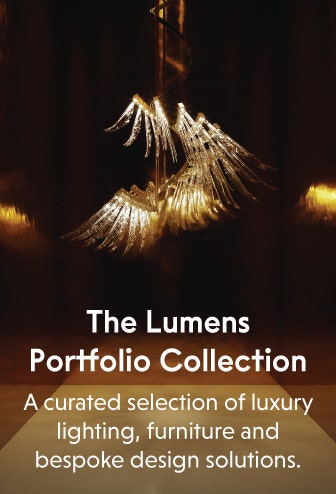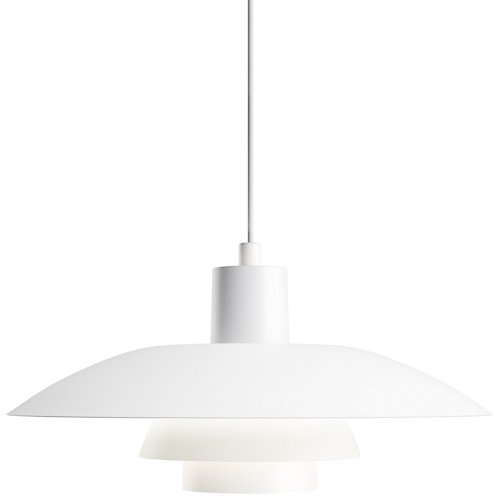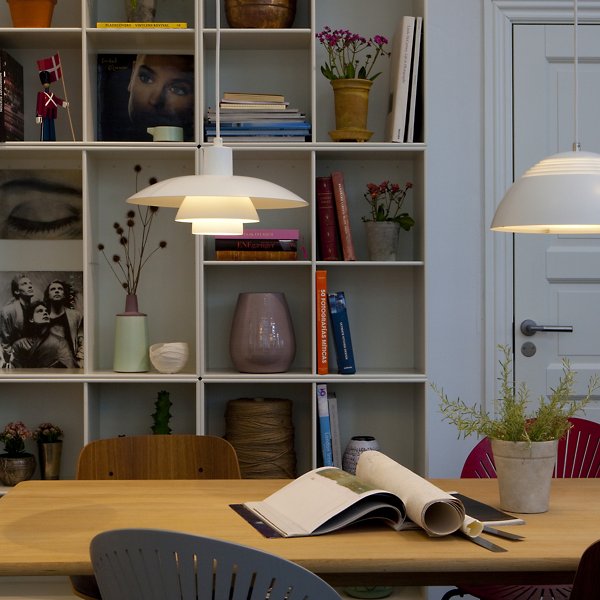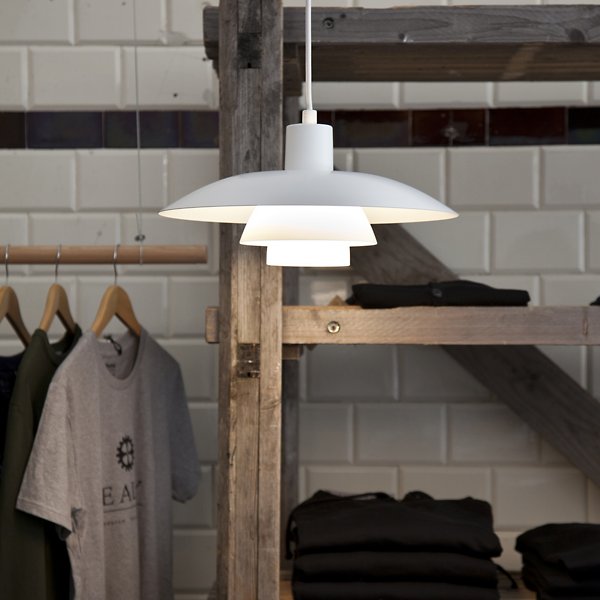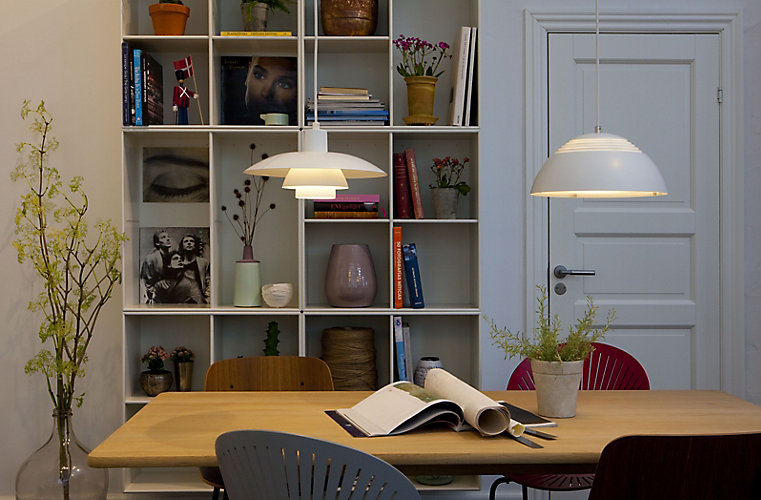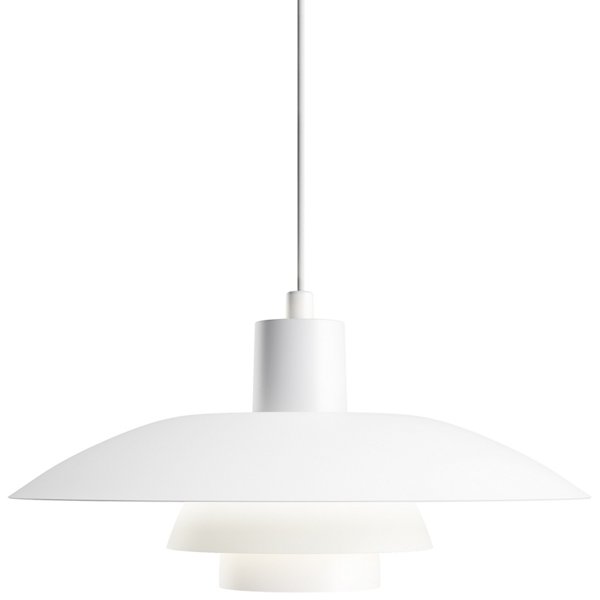Variations
Questions about the PH 4/3 Pendant Light?
Our team of design specialists is certified by the American Lighting Association to bring you expert service with a personal touch.

Questions about the PH 4/3 Pendant Light?
Our team of design specialists is certified by the American Lighting Association to bring you expert service with a personal touch.

Freight Delivery Options
See What's Available Soonest

The Louis Poulsen Story
Key Features
The PH 4/3 Pendant Light from Louis Poulsen is a stellar example of the iconic Poul Henningsen design using painted metal shades to provide iconic appeal. It uses a layered System PH shade of spun aluminum dishes braced by slender rods to ensure an even distribution of ambient light, a signature of Henningsen’s “glare-free” light design philosophy that delivers illumination where it is most needed while accompanied by soothing shadows. It has been tailored slightly from its initial 1958 design to hold modern lamping. Its iconic design is able to be used with any lamping, delivering glare-free light regardless of where it is suspended from and transforming its environment with an enchanting character.
When you hear the name Louis Poulsen, you think distinctive modern Danish lighting. From the classic icons of the 1920s to more recent pieces, all Louis Poulsen lighting is created based on a deep-felt respect for architecture, understanding the emotional effect of lighting and the belief that shadow is just as aesthetically important as light. All three aspects manifest themselves in the sculptural layering and comfortable, glare-free light of Louis Poulsen pendants, wall, table and floor lamps.
Key Features
The PH 4/3 Pendant Light from Louis Poulsen is a stellar example of the iconic Poul Henningsen design using painted metal shades to provide iconic appeal. It uses a layered System PH shade of spun aluminum dishes braced by slender rods to ensure an even distribution of ambient light, a signature of Henningsen’s “glare-free” light design philosophy that delivers illumination where it is most needed while accompanied by soothing shadows. It has been tailored slightly from its initial 1958 design to hold modern lamping. Its iconic design is able to be used with any lamping, delivering glare-free light regardless of where it is suspended from and transforming its environment with an enchanting character.
When you hear the name Louis Poulsen, you think distinctive modern Danish lighting. From the classic icons of the 1920s to more recent pieces, all Louis Poulsen lighting is created based on a deep-felt respect for architecture, understanding the emotional effect of lighting and the belief that shadow is just as aesthetically important as light. All three aspects manifest themselves in the sculptural layering and comfortable, glare-free light of Louis Poulsen pendants, wall, table and floor lamps.
- Designed by Poul Henningsen
- 12-foot power cord
- Material: Aluminum
- Shade Material: White spun aluminum
- Sloped Ceiling Adaptable: Yes
- Canopy Shape: Round
- Location Rating: UL Listed
- Made from Sustainably Sourced Materials: This design is produced using responsibly harvested, reclaimed or alternative materials.
- Eco-Friendly Packaging: This design is shipped using recycled, recyclable or limited packaging materials to reduce waste and carbon footprint.
- Not OK for Outdoor Use
- Assembly Required: No
- Made In Denmark
Compare Brightness:
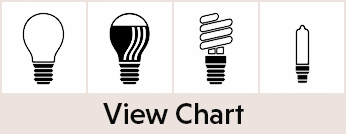
Lumens
The amount of light that comes from a bulb, which has commonly been measured in watts. The more lumens, the brighter the bulb.Wattage
A measurement of the power delivered to a component of an electric circuit (allowing a one-ampere current to flow through the component under the pressure of 1 volt.)Bulb Shape
Bulb shapes are denoted with a letter, which describes the shape, and a number, which indicates the size. The number indicates the diameter of the light bulb at its widest part in eighths of an inch.Base
The part of the bulb that connects to the fixture and its power supply. Bulb bases are denoted with the letter E, and a number which indicates the diameter of the bulb base at its widest part in millimeters.Voltage
Indicates how much voltage a bulb can accept via the fixture it's installed in.Light Color Temperature
The relative color from a light source, measured on the Kelvin temperature scale. Warm light is lower in color temperature (2700-3000 K) and cool, blue light is higher (5000 K).Average Rated Life
The average amount time that a bulb is expected to last.CRI
CRI = color rendering index. This number, which can go from 0 to 100, measures the ability of a light or bulb accurately renders colors. The higher the number, the better, with most quality bulbs these days measuring at least in the 80s.Manufacturer IDs: view
5741928598
California Residents: Prop 65 regulations
